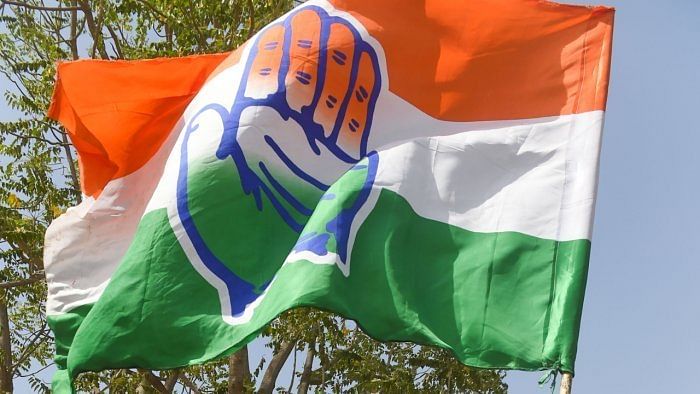
Punjab would have felt a sense of near déjà vu as it watched the Congress’ political crisis in neighbouring Rajasthan. The magnitude of the damage, or damage control if at all, in the increasingly unworkable matrix between the Gandhis, Ashok Gehlot and Sachin Pilot will be reckoned with eventually. What can be said now though is that it underscores the treatment meted out to Chief Ministers by the Congress high command. On his discourteous exit as Punjab Chief Minister, old Congress warhorse Capt Amarinder Singh, now in the saffron fold, said he felt “humiliated” at the hands of the Gandhis, who wanted a new face in Punjab ahead of elections, just like in Rajasthan now. The Congress that looked formidable at one time before the Assembly elections in Punjab is now licking its wounds.
Spool back the pages of Congress history. In 1990, Rajiv Gandhi removed Veerendra Patil from the hot seat midway through Patil’s second innings as Chief Minister of Karnataka. It was another matter that Patil was seriously ill and in no position to run the government, but what was perceived as the summary ouster of a well-respected Chief Minister ensured that the Congress lost the support of the powerful and electorally significant Lingayat community, to which Patil belonged. The party has not been able to recover the community’s support since.
In Andhra Pradesh in 1982, Indira Gandhi dismissed Chief Minister T Anjaiah, reportedly over an event at the airport that angered then AICC general secretary Rajiv Gandhi. It cost the party dear as the Congress tasted defeat in Andhra Pradesh in the 1983 Assembly elections.
In 2008, Puducherry Chief Minister N Rangaswamy was removed from office to appoint a nominee of the Congress high command. Rangaswamy set up his own party, won the 2011 Assembly election convincingly, and formed the government. He is currently the Chief Minister again, and is part of the BJP-led NDA.
Back in Punjab, much of the Congress debacle was self-inflicted, which is why the pandemonium in neighbouring Rajasthan has reverberated in Punjab. Bhagwant Mann, the Aam Aadmi Party Chief Minister in Punjab, is mocking at the Congress for failing to keep its house in order. Crucially, Mann also accuses the Congress and the BJP of colluding to destabilise his government.
The AAP is hoping for a groundswell in Gujarat and Himachal Pradesh, and much of the political dynamics between the warring parties in Punjab is being orchestrated with an eye on the two poll-bound states. That also possibly explains why the AAP government felt the need, strangely though, for a confidence motion in the Punjab Assembly – only the second time in Punjab’s political history.
Behind all this political manoeuvring by the AAP government were allegations of an attempted ‘Operation Lotus’, or political horse-trading, by the BJP. The AAP claimed that 10 of its MLAs were offered a Rs 25 crore each to switch loyalties by the BJP in an effort to destabilise its government, a charge denied by the saffron party. For a party that romped home to a landslide victory only in March this year, with a never-before score of 92/117 seats, its majority was not in doubt and winning the confidence motion itself was a cakewalk. But the idea behind it was to send out a message to the electorate not just in Punjab but in the two poll-bound states of Gujarat and Himachal Pradesh that the AAP remains resolute, and its house in complete order, unlike other political outfits.
The AAP’s victory in March in Punjab had reinvigorated Arvind Kejriwal. After all, this was the second state, after Delhi, where the AAP had won a landslide victory. Kejriwal sees his party nudging the Congress out as the principal opposition party at the national level. The outcome of the upcoming polls in Gujarat and HP will be crucial to that goal and will tell the rest of the nation whether Kejriwal could emerge on the national political scene to challenge Narendra Modi.
That’s what has left both Congress and BJP fidgety. Mann and Kejriwal are staple ingredients in poll rallies in Gujarat and HP. The Delhi model of governance, the resounding victory in Punjab and AAP’s claims of its achievements in Punjab in the last six months of rule are the party’s selling points in the poll-bound states.
Both the Congress and the BJP in Punjab are biding to blunt this burgeoning propaganda, showing it rather to be a case of leadership failure in Punjab and that Mann is being remote-controlled by his party bosses in Delhi. It is a charge that Mann has not been able to rebut convincingly. The concerning rise of radical voices in Punjab has the AAP at the receiving end. Just a few months after its outstanding victory, the AAP had egg on its face after it lost a crucial by-poll for the Member of Parliament (MP) seat from Sangrur.
This seat is the home turf of Chief Minister Mann, and he in fact was the MP from Sangrur in Punjab’s Malwa region, before he became CM. More significantly, the seat was won by a Khalistan ideologue, Simranjit Singh Mann, who now represents the SAD (Amritsar) in the Lok Sabha. Mann’s alleged fiasco at the Frankfurt airport, where he was reportedly deplaned after he was found to be ‘drunk’, was fodder, too, for the Opposition.
Punjab offers lessons for the Congress, but who in the party is listening. The Congress unit still remains a badly divided house, its former CM Charanjit Channi is missing in action, having chosen to exile himself somewhere in Canada under the pretext of pursuing a PhD, and its motor-mouth leader Navjot Singh Sidhu, the man who pulled the Congress into this morass with his unrelenting bid to unseat Capt Amarinder Singh, is spending time in jail.